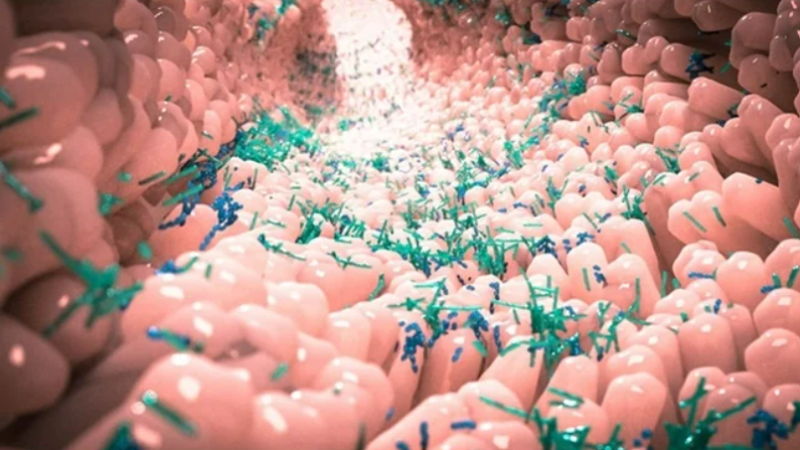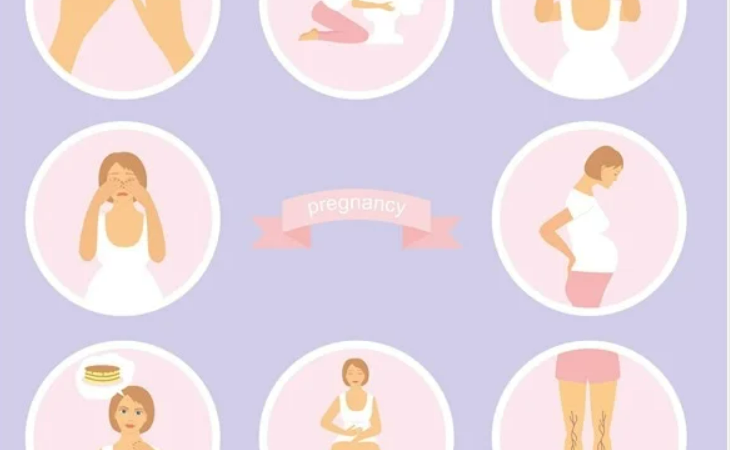Six Too Simple to Ignore Breast Cancer Early Symptoms

Early detection of breast cancer signs can significantly slow the spread of the condition. Your chances of fully recovering will increase the faster you recognize it and begin treatment. However, it can be a little tricky to know exactly what to look for and what kinds of changes call for a discussion with your doctor.
That’s because each person’s experience of breast cancer symptoms will be unique. According to Meghan R. Flanagan, MD, MPH, a surgical oncologist with expertise in breast health at the Fred Hutchinson Cancer Center, they also differ based on the type of breast cancer and the area where it occurs, such as behind the nipple vs toward the chest wall.
According to Dr. Flanagan, a new lump or a change in the breast’s shape or contour are the most typical early signs of breast cancer. Nipple alterations, skin changes, or breasts that feel particularly big are among other warning signs, she continues. (We’ll get deeper into these below.)
If you don’t pay close attention to your breasts or are prone to breast changes during your period, it can be very simple to miss these warning signs. According to Monique Gary, DO, breast surgical oncologist and medical director of the Grand View Health/Penn Cancer Network Cancer Program, many women with early-stage breast cancer don’t exhibit any observable symptoms. According to her, this is why it’s so important for those who are of screening age or have a family history of breast cancer to schedule their regular mammograms.
In light of this, here are six breast cancer early warning signals that every woman with boobs should be aware of.
What are breast cancer’s early warning signs?
The following signs and symptoms may not always indicate breast cancer, but Dr. Flanagan advises getting any breast changes checked out by a doctor just in case.
1Mammogram that is abnormal
According to the National Cancer Institute, a mammogram is a standard screening method that employs low-dose X-rays to find symptoms of breast cancer. According to Dr. Flanagan, the reason a mammography is so beneficial is that it can find cancer in the majority of patients who have the disease but have not yet felt a lump in their breast.
According to Jennifer O’Neill, MD, FACS, a breast surgeon with Arizona Oncology, mammograms also assist medical professionals in identifying other detectable signs of breast cancer before more evident changes may manifest, says SELF. According to the American Cancer Society, they may include calcifications, which are little calcium deposits within the breast tissue, masses of aberrant tissue, and deformities in the breast tissue. Depending on what the mammography reveals, this isn’t usually enough to definitively diagnose breast cancer, but these symptoms should encourage your doctor to conduct additional tests.
2. Prominent lumps
This one is undoubtedly one you’ve heard of, and with good reason. Do not dismiss a solid lump that you feel anywhere near your breast or underarm. In fact, a lump was by far the most frequently reported of the 56 visible breast cancer symptoms, according to one study.
Because they are frequently confused with fibrocystic breast changes, the non-cancerous changes that give a breast a lumpy or ropelike texture, typically from hormonal changes that happen during a person’s period, Dr. Gary says palpable lumps in young people with breasts are one of the more frequently missed or disregarded symptoms. According to the Cleveland Clinic, this is very prevalent, affecting 50% of menstruating women between the ages of 20 and 50.
This makes self- and clinical assessments difficult since you might assume a new lump is a cyst or a typical alteration in the breast tissue, according to Dr. Flanagan. Get it checked out if an existing lump does not disappear after your subsequent period.
3. Modifications to breast contour and form
Your breast shape will inevitably vary over time. Because of gravity, your breasts at 20 are not the same as your breasts at 50, especially if you have ever been pregnant or breastfed a child.
However, when such changes appear to have come suddenly and don’t appear to be connected to your menstrual cycle, a big change in your weight or weight loss, pregnancy, or nursing, it’s time to contact a doctor. For instance, Dr. Gary claims that alterations in the breast’s shape, such as dimpling, may be a warning indication of breast cancer. According to the American Cancer Society, thickening or swelling of the breast should be taken seriously even if you are not aware of any lumps. According to Dr. Gary, these alterations can become more obvious when cancer cells spread inside the tissues.
4. Changes or discharge in the lips
According to the Centers for Disease Control and Prevention, certain alterations to your nipples, such as nipples that curve inward, pull to one side, dimple, or change direction, can be another early symptom of breast cancer (CDC). Consult your doctor if you experience nipple inflammation, scaly skin, crusting, itching, or a burning feeling.
Another issue that merits consideration is unusual nipple discharge. If you’ve ever been pregnant, you’re probably accustomed to having fluids flow from your nipples (hello, colostrum and breast milk). However, discharge that is brand-new and not evident due to pregnancy, breastfeeding, or another medical reason should raise some red flags, particularly if it is “abnormal,” which means it is bloody, only leaks from one nipple, or comes out on its own without being squeezed.
5. Skin swelling, discolouration, or inflammation
The National Cancer Institute states that inflammatory breast cancer (IBC), a rare and “very” aggressive form of the disease that is frequently misdiagnosed as an infection, can be linked to new onset of breast discoloration, thickening of the breast skin, swelling that affects more than a third of the breast, or swollen lymph nodes close to the underarm, though these symptoms are less frequent than other early breast cancer signs. According to Dr. O’Neill, the texture of the breast beneath the skin may also change.
Depending on your skin tone, the discoloration from IBC may look pink, crimson, reddish-purple, or bruised. This is significant since inflammatory breast cancer is frequently only described as “redness” despite the fact that Black people are disproportionately affected by the disease and may not be as aware of skin discoloration as those with lighter skin. 2,3
6. Breast ache or weight
Despite the fact that most breast cancers are painless, it is conceivable. According to Dr. Flanagan, experiencing breast soreness and heaviness are potential early indicators that frequently go unnoticed or untreated. According to her, imaging should be carried out to rule out breast cancer in cases of unilateral, new-onset breast pain [in a particular place]. The American Cancer Society advises having the pain evaluated if it is severe or persistent. This kind of pain is frequently linked to inflammatory breast cancer, which can also result in tenderness, aching, and heaviness in addition to the aforementioned edema, inflammation, and thickness of the breast.
How to look for early signs of cancer in your breasts
Symptom awareness is only one piece of the preventative puzzle. Additionally, you should often check your breasts and simply be conscious of what “normal” means for your particular body. Here are some advice-backed suggestions to get you started.
Close your eyes and examine your breasts.
According to Dr. Gary, the “normal” we’re referring to has a name: It’s like having “breast self-awareness,” It entails being aware of your breasts’ ins and outs both before and during your period, a time when your hormones are changing. It also entails becoming familiar with any asymmetry that may be typical of you, such as variations in breast size or nipple position. According to Dr. Gary, “I tell my patients their breasts are twins but rarely identical.”
What Is Software for Backup and Recovery?
Dr. Flanagan advises knowing how your breasts feel and seem by examining them in the mirror. Make sure to wait a few days after your menstruation ends because it is preferable to do it when your breasts are not sore or puffy. Examine your breasts visually both with your arms at your sides and raised high over your head. “Look for any changes,” she advises, including the ones just described. Experts no longer advise performing regular systematic self-examinations (unless you’d like to), instead emphasizing this kind of self-awareness so you may contact your doctor if you see something out of the ordinary.
Recognize your risk and discuss screening with your doctor.
Investigate your family’s breast cancer history if at all possible. The CDC advises taking notes and asking inquiries about your grandparents, parents, and siblings (irrespective of their gender). Give your doctor any details about your family’s history because, according to Dr. Gary, screening recommendations vary for persons with a family history of cancer.
Various organizations offer different mammogram frequency recommendations, however the American Cancer Society and the American College of Obstetricians and Gynecologists both agree that women as young as 40 should discuss their screening schedules with their doctors.
When you sense that something is off, be persistent.
Dr. Flanagan advises getting re-evaluated with a breast exam and maybe a repeat diagnostic mammography if you have had normal mammogram results within the last year but now have new, potentially alarming symptoms.
Regardless of your age, Dr. Gary advises, “If you do feel something different than your baseline, seek medical assistance early—don’t assume it’s nothing.” Likewise, according to her, your doctor shouldn’t dismiss it without conducting the necessary tests, such as a clinical breast exam and imaging. If they don’t take you seriously, see if you can obtain a second opinion. When we know that breast cancer recognizes no age and may affect anyone, we encounter too many women who are told they are “too young for breast cancer.”





